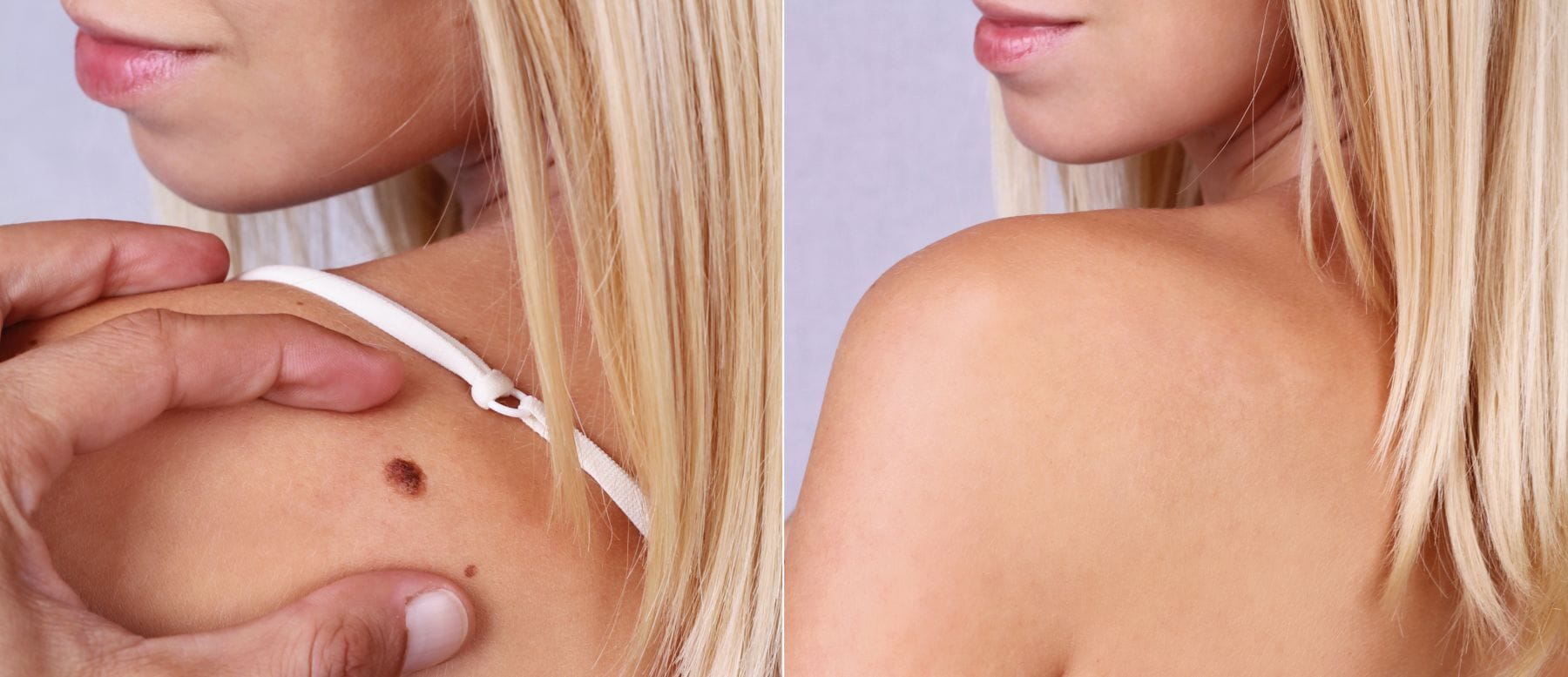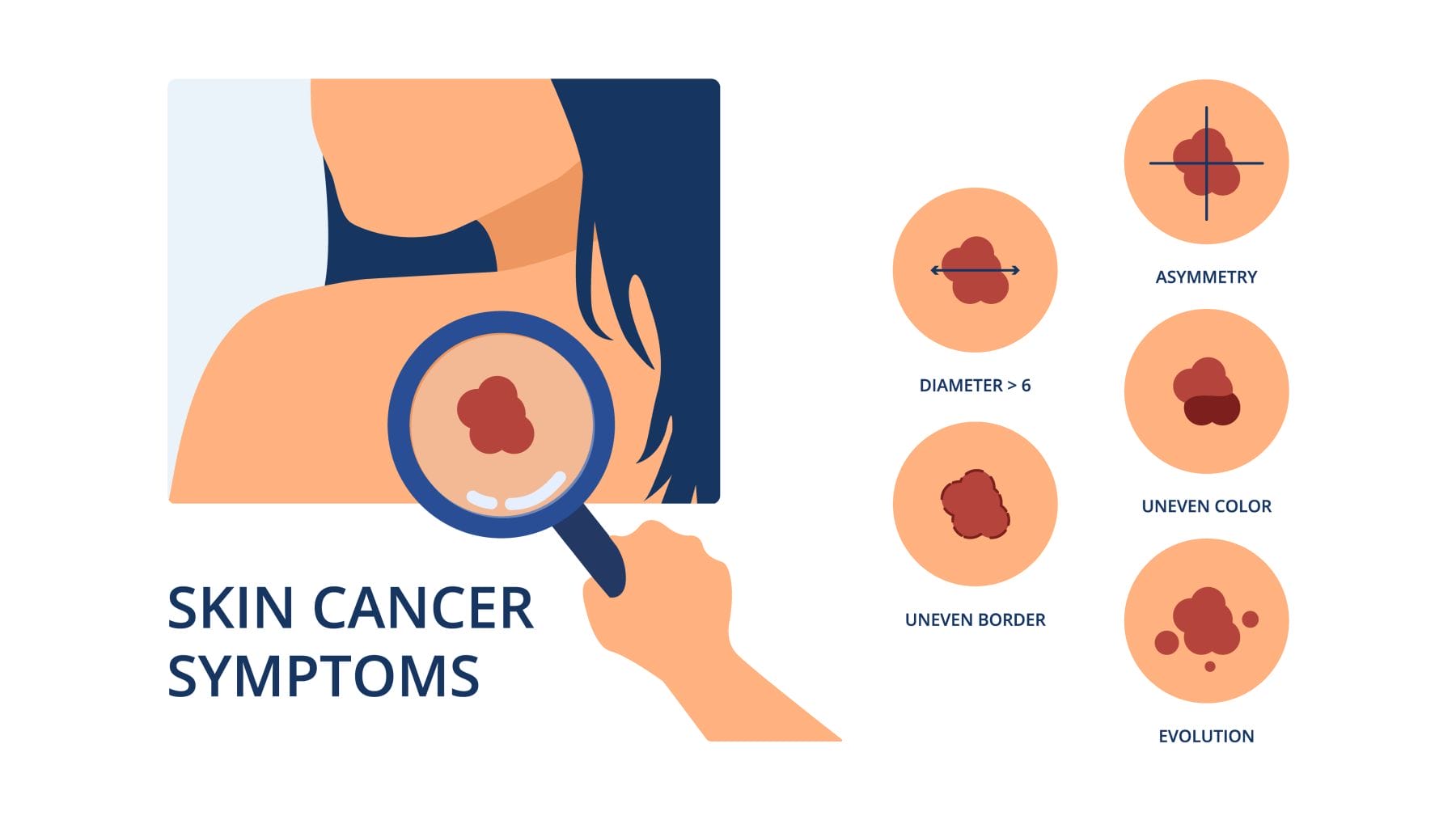When To Worry About Mole Changes
Moles, those small, pigmented skin growths, are quite common. In fact, most people have them, and they’re usually harmless. But what’s essential is recognising when these innocent-looking spots start to change.
In this blog, we’ll look into understanding moles, what causes them, what causes normal mole changes, and when you should book your mole check appointment.
What is a Skin Mole?
A skin mole is a growth on the skin that is composed of pigmented cells. They can be flat or raised, smooth or rough, and can range in colour from tan to dark brown. Moles are usually round or oval and have well-defined borders. Normal moles are typically harmless and pose no health risks.
Moles can appear anywhere on the body and can vary in size, shape, and colour. While most moles are benign (non-cancerous), it’s crucial to be aware of any changes in their appearance.
What Causes Moles to Form on the Skin?
Moles are the result of melanocytes which are specialised skin cells responsible for producing melanin, the pigment that gives our skin its colour.
Normally, melanocytes are evenly spread throughout the skin, ensuring a consistent tone. But, in some cases, these cells begin to cluster together, forming moles.

What Causes Normal Moles to Start Changing?
Normal moles can evolve over time. While most changes are harmless, some may indicate a potential problem. Here are some common reasons why normal moles change:
- Sun Exposure: Excessive sun exposure can cause moles to darken or become more prominent. Protecting your skin from the sun’s harmful UV rays is essential.
- Hormonal Changes: Hormonal fluctuations, such as those during pregnancy or puberty, can lead to changes in moles. It’s common for moles to darken or increase in size during these times.
- Ageing: The ageing process itself can cause moles to change, with some becoming raised or developing hairs.
Why Should You Be Worried About Mole Changes?
Changes in a mole’s appearance can sometimes indicate early abnormal change, or further along the spectrum, skin cancer.
While most moles are harmless, certain changes, such as the size, shape, colour, or the development of irregular borders, can be warning signs.
Early detection of these changes is important to address potential health concerns. Monitoring your moles and seeking medical advice from our doctors when needed can greatly improve the chances of successful treatment and ensure your overall well-being.
What Mole Features are a Concern?
Use the simple and effective ABCDE method to easily identify changes in your moles.
These are the key changes to be aware of when assessing your moles:
A – Asymmetry
Normal moles are usually symmetrical. This means that if you were to draw an imaginary line through the middle, both halves should match in shape and size. If you notice that one half of a mole looks different from the other, it could be a cause for concern. Asymmetry can indicate irregular cell growth and should prompt you to have a mole checked at one of our clinics.
B – Border Irregularities
Healthy moles have well-defined, clear borders. The edges should be smooth and uniform. If you notice any jagged or irregular borders, or if the border seems to blend into the surrounding skin, it’s essential to get the mole checked. Border irregularities can be a sign of abnormal cell growth.
C – Colour Changes
While moles can vary in colour, they are usually uniform, often a shade of brown. When a mole changes colour, especially if the mole darkens or becomes multi-coloured, this should raise a red flag. The darkening of a mole could indicate an increase in melanin production, which might be concerning. Keep a close eye on any mole that changes colour.
D – Diameter
Normal moles are generally small, often less than 6mm in diameter, about the size of a pencil eraser. While size alone isn’t always indicative of a problem, sudden or significant growth in diameter should be assessed. Monitoring the size of your moles is crucial to detect potential issues early.
E – Evolving Appearance
Moles that change over time, whether in size, shape, or colour, should be examined by our doctors. If you notice any mole changes in appearance, don’t ignore them. Keep track of any changes and get your mole checked.

How MyHealthcare Clinic Can Help with Your Moles
At MyHealthcare Clinic, we prioritise your skin’s health. We provide comprehensive mole checks, offering reassurance and early detection of potential issues.
Our skilled dermatology experts use state-of-the-art techniques to identify abnormalities, ensuring early intervention and offering mole removal if needed.
Your safety is our utmost concern, and we offer transparent, affordable pricing in award-winning clinics designed for quality care in a medically safe environment.
Choose MyHealthcare Clinic for expert mole care, early detection, and peace of mind. Your well-being is our priority.
Frequently Asked Questions
Read our most commonly asked questions about mole changes:
Yes, it’s usual for moles to change a bit as time goes on. This can happen because of sunlight, hormones, or simply getting older. Most of these changes are harmless, but it’s essential to keep an eye on them.
You should be concerned if a mole gets a lot bigger, changes shape, or its colour changes significantly. Also, if it looks uneven or has an irregular border, that’s a sign to see one of our doctors.
Yes, moles can change during pregnancy because of hormones. They might get darker or bigger. Most of the time, this is okay, but you should still watch them and consult our experienced doctors.
No, not all changing moles are cancerous. Many changes are harmless, caused by things like hormones or sun exposure. However, if you see big or unusual changes, it’s wise to check in with our doctors to be sure.
A cancerous mole, like melanoma, might look uneven, have mixed colours, an increasing size, have irregular borders or symptoms such as bleeding. Remember, these signs don’t always mean cancer, but it’s essential to get them checked by our skilled doctors.
While not all moles become skin cancer, early detection is important. Protect your skin from too much sun, regularly check your moles, and book an appointment with one of our doctors if you notice any changes as above. Early detection and treatment greatly increases outcomes.
